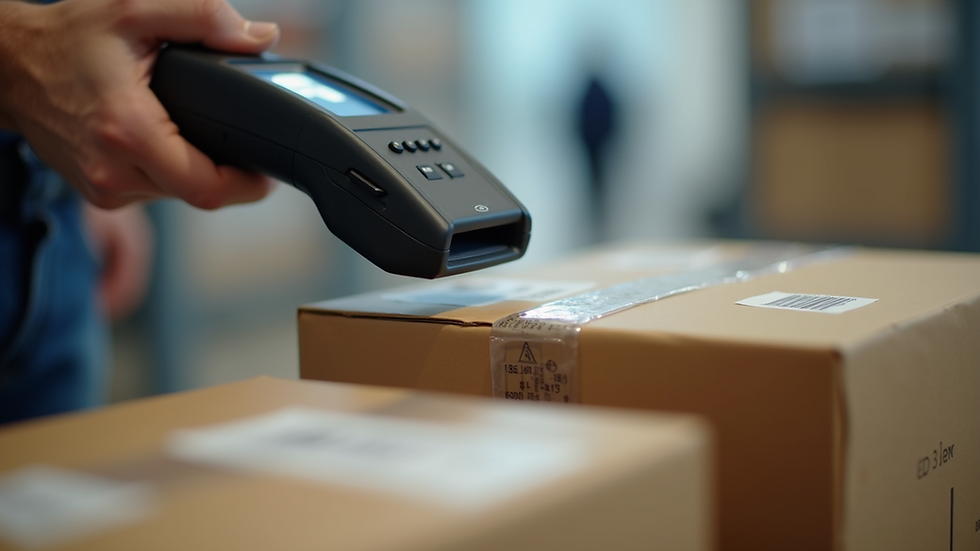Streamline Insights with Automated Data Collection
- andrew
- Sep 2
- 3 min read
In today's fast-paced digital world, businesses and organizations generate vast amounts of data every second. Extracting meaningful insights from this data is crucial for making informed decisions and staying competitive. However, manual data collection can be time-consuming, error-prone, and inefficient. This is where data collection automation comes into play, revolutionizing how data is gathered, processed, and analyzed.
The Importance of Data Collection Automation
Data collection automation refers to the use of technology to gather data without human intervention. This process enhances accuracy, speeds up data acquisition, and reduces operational costs. By automating data collection, companies can focus more on analyzing data rather than spending valuable time collecting it.
For example, retail businesses can use automated systems to track inventory levels in real-time, ensuring shelves are always stocked without manual checks. Similarly, healthcare providers can automatically collect patient data from various devices, improving patient monitoring and care.
Benefits of data collection automation include:
Increased efficiency: Automated systems work 24/7 without breaks.
Improved accuracy: Reduces human errors in data entry.
Cost savings: Less need for manual labor.
Real-time data: Enables faster decision-making.
Scalability: Easily handles growing data volumes.

How Data Collection Automation Transforms Business Operations
Integrating data collection automation into business processes can transform operations across various industries. It allows companies to gather comprehensive data sets that were previously difficult or impossible to collect manually.
In manufacturing, sensors can automatically monitor equipment performance and detect anomalies before they cause downtime. This predictive maintenance reduces costs and improves productivity. In marketing, automated tools collect customer behavior data from websites and social media, enabling personalized campaigns that increase engagement and sales.
To implement data collection automation effectively, businesses should:
Identify key data sources: Determine which data is critical for decision-making.
Choose appropriate tools: Select software and hardware that fit the organization's needs.
Ensure data quality: Set up validation rules to maintain accuracy.
Integrate with existing systems: Seamlessly connect automated data collection with analytics platforms.
Train staff: Educate employees on using and maintaining automated systems.

What is the automated data collection method?
The automated data collection method involves using technology such as sensors, software, and devices to gather data without manual input. This method can be applied in various forms depending on the industry and data type.
Common automated data collection methods include:
Sensor-based collection: Devices like temperature sensors, motion detectors, and GPS units collect environmental or positional data.
Web scraping: Software extracts data from websites automatically.
API integration: Systems communicate and exchange data directly through application programming interfaces.
RFID scanning: Radio-frequency identification tags track inventory or assets.
Mobile data collection apps: Field workers use apps to input data that syncs automatically with central databases.
Each method offers unique advantages and can be combined for comprehensive data gathering. For instance, a logistics company might use GPS tracking and RFID scanning to monitor shipments in real-time.
To maximize effectiveness, organizations should evaluate their specific data needs and select the most suitable automated collection methods.

Practical Tips for Implementing Automated Data Collection
Successfully adopting automated data collection requires careful planning and execution. Here are some actionable recommendations:
Start small: Pilot automation on a single process before scaling up.
Focus on data security: Protect sensitive information with encryption and access controls.
Leverage cloud solutions: Use cloud platforms for scalable storage and processing.
Monitor system performance: Track automation tools to identify and fix issues promptly.
Collaborate across teams: Involve IT, operations, and analytics teams for smooth integration.
By following these steps, organizations can reduce risks and ensure a smooth transition to automated data collection.
Future Trends in Data Collection Automation
The future of data collection automation is promising, with emerging technologies driving innovation. Artificial intelligence (AI) and machine learning (ML) are increasingly integrated to analyze data as it is collected, providing instant insights and predictive analytics.
Additionally, the Internet of Things (IoT) expands the scope of automated data collection by connecting everyday devices to networks, enabling continuous data streams from diverse sources.
Blockchain technology is also being explored to enhance data security and transparency in automated systems.
Businesses that stay ahead by adopting these trends will gain a competitive edge through faster, smarter decision-making.
Embracing automated data collection is no longer optional but essential for organizations aiming to harness the full potential of their data. By streamlining data gathering processes, companies can unlock deeper insights, improve operational efficiency, and drive innovation in their industries.





Comments